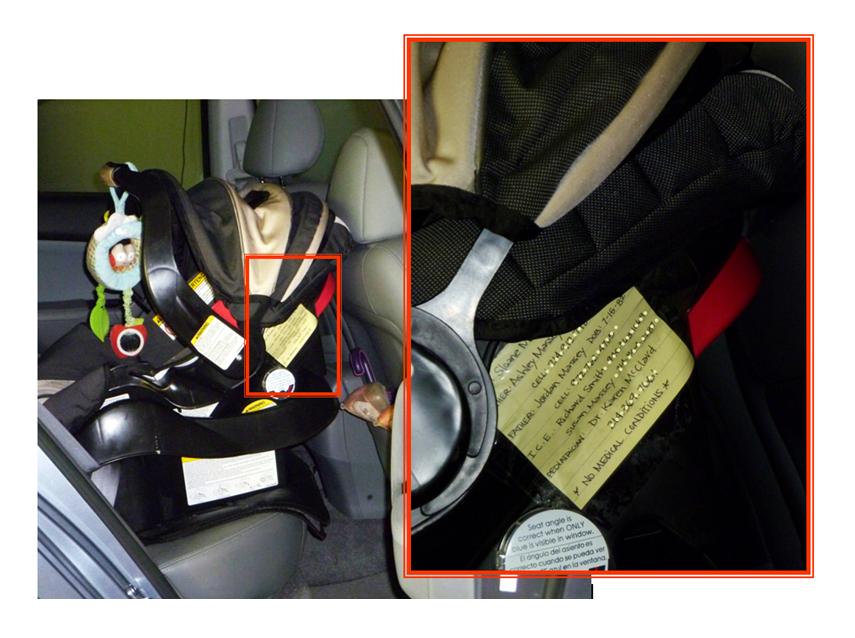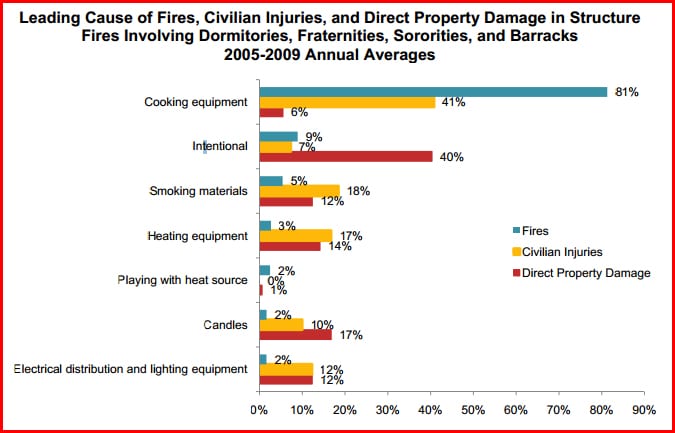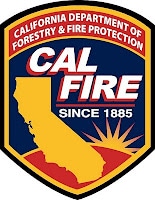by California Casualty | Safety |
Car crashes are the number one killer of children 1 to 12 years old in the United States.
As part of National Preparedness Month, today we will be talking about Car Seat Safety (it’s also National Child Passenger Safety Week!)
Just how important is making sure your child is buckled in correctly to an age and size appropriate car seat?
On average, 2 children are killed and 325 are injured in car accidents every day.* This fatality rate could be reduced by about half if the correct child safety seats were always used.**

So how can you check to make sure you are using the correct car seat in the correct way for your child?
Check out these great recommendations for car seats and boosters as well as installation and maintenance tips.
To make sure your child’s seat is the correct one installed in the correct way, you should have it inspected by a certified technician. Often, these certifications are free. You can find a location close to you by clicking here.
We also wanted to share a great tip with you that we found and shared on our Firefighter Pinterest board. It started with this photo:

In this photo, you can see the parent has attached Emergency Contact and Medical Information.
When we found this Pin, it was shared by a Firefighter/Paramedic. He commented that this kind of information is critical in the event of a car crash. In case the driver is separated from the child or otherwise unable to communicate medical information to First Responders, securing vital information to a car seat will help provide EMTs with potentially life-saving information.
While some newer car seats come with a spot for this information, many do not. Even if your child’s car seat does not have a specific spot for this info, you can secure it to the seat yourself. Simply write up the information (we recommend using bright or neon paper so it’s more noticeable) and use waterproof, clear tape to secure it to your car seat.
Here are some suggestions on what to include:
- Child’s Name
- Date of Birth
- Parent Identification and Contact Information (Names and Phone Numbers)
- Emergency Contact Information (Name and Phone Number)
- Primary Physician/Pediatrician Information
- Any known medical conditions
- Any known allergies
- Any relevant medical information
No matter how safe of a driver you are, remember that there are other drivers on the road and that accidents happen every day. Help safeguard your child’s safety by having your car seat inspected and by securing contact and medical information to your child’s car seat.
Sources:
*Based on National Highways Traffic Safety Administration c2010 Crash Data
**Based on the latest mortality data currently available from the CDC’s National Center for Health Statistics
by California Casualty | Safety |
It’s officially September!
Goodbye Summer sunshine, hello Fall foliage!

Aside from being the season of cider and sweaters, Fall is also…
National Preparedness Month.
Here at CalCas, we will be celebrating by posting weekly Preparedness content right here on our Blog 🙂
First on deck: A Preparedness App!
As a recent iPhone converter, I am all aboard the App train. I’m always on the lookout for exciting new stuff and this new app from the Insurance Information Institute is one such find!
It’s called the “Know Your Plan” App and it’s all about streamlining your Disaster Prep Plans.
What you should know about this App:
What it provides:
- A library of preloaded preparedness checklists for disasters including:
- Hurricanes
- Floods
- Earthquakes
- Tornadoes
- Severe Cold
- Wildfires
- Evacuation
- Tips for preparing an emergency kit
- Important property protection information
- Step-by-step preparedness tips
- Custom lists for your personalized preparedness plan
- Targeted task completion dates
- Tools to chart your progress (including a countdown feature!)
- Checklists share options for family and friends
- Evacuation resources (even one for pets!)
- Geotargeted emergency alert feeds for up-to-the minute information about local evacuation routes and other disaster information
- User-customizable notes
As Fall and September swing into full gear, make sure you are ahead of the curve when it comes to Disaster Preparedness.
After all, you never know when you may need it.
By compiling disaster preparedness information and plans all in one place–on your phone–you are putting life-saving plans in place.
Stay tuned for more great Preparedness content throughout the month!
by California Casualty | Firefighters, Safety |
Do you have (or are you yourself) a student going away to school this fall?

(awww…)
The lists of things to remember to do before leaving home is immense: dorm necessities, vaccinations, class registrations… the list goes on and on.
In all the chaos and excitement, it’s hard to remember everything.
But the Los Angeles Fire Department came out with an important reminder this month: Prepare for the possibility of a fire in university housing.
Just like you have fire plans at home, at school, and at work, you also need one for Campus Housing.
Think it will never happen at your school?
155 people have died in campus-related fires since January 2000.
The National Fire Protection Association says fire departments responded to an average of 3,840 structure fires in dorms, fraternities, sororities and barracks between 2005-2009. Every year (on average), fires caused:
- 3 civilian deaths
- 28 civilian fire injuries
- $20.9 million in direct property damage
So what can YOU do to keep yourself or your child safe while they’re away?
1. Identify fire risks. 81% of reported fires involved cooking equipment

2. Know the Common Factors in Housing Fires: (source)
- Fires in campus housing are most common between the hours of 5 and 11 p.m.
- Lack of automatic fire sprinklers
- Missing or disabled smoke alarms
- Careless disposal of smoke materials
- Impaired judgment
- Fires originating on upholstered furniture on decks or porches
3. Follow these Tips: (source)
- Look for fully sprinklered housing
- Make sure your housing unit has smoke alarms inside each bedroom, outside every sleeping area and on each level
- Confirm that smoke alarms are tested at least monthly
- Never remove batteries or disable alarms
- Learn building evacuation plans and have a copy on hand BY the door. No organized plan? Make sure YOU have a fire escape plan with two ways out of every room
- Cook only where permitted
- Cook only when alert and not sleepy or drowsy
- Different states have different restrictions for use of BBQ grills, fire pits and chimeneas. Check with your local fire department before using these items- especially if you moved from out-of-state!
- Check with school rules on electrical appliances in your room
- Use the right surge protectors for your computers or electronics and make sure the protector is plugged directly into an outlet
4. Ask these Questions when you arrive at school or drop your student off there
We know this is a busy time for everyone. There’s a lot of excitement and preparation that goes into starting a new semester at school. But please be sure to take FIRE SAFETY into account. It’s a real risk that is too often forgotten, which can lead to deadly consequences.
Additional resources:
by California Casualty | Peace Officers |
It’s Monday. And Mondays usually elicit the usual the-weekend-is-over-time-for-a-full-workweek sigh.
So today we are excited to not just profile a TOP LEO Blog, but also give you something to look forward to on Mondays!
Today’s Top Blog is…

The 5-2: Crime Poetry Weekly Blog!
First things first. What is The 5-2? The 5-2 is a blog (duh) that updates every week and brings you poetry written by members of law enforcement. That’s right: Crime poetry. We thought this was such an amazing way to give LEOs an outlet, a way to express the often inexpressible happenings of their day-to-day duties.
So, what does this have to do with Mondays? Good question. The weekly part of The 5-2 comes on Monday. That’s when Gerald So, writer and blog maintainer, updates the site. So if you have the Monday blues, here’s something for you to look forward to!
As usual, we caught up with Mr. So to hear more about this very unique LEO blog. Here’s what he has to say about The 5-2…
What is the primary focus of The 5-2? To publish an all-new crime-themed poem each Monday year-round.
Why did you start it? The 5-2 evolved from a print chapbook series I published called The Lineup: Poems on Crime. The Lineup unfortunately didn’t get much distribution before it became too costly to continue printing. By contrast, I can maintain The 5-2‘s quality presentation without printing costs.
How long have you been blogging crime poetry? The blog has tracked The Lineup’s progress since February 2008. It has featured The 5-2‘s all-new poetry since September 12, 2011.
If this isn’t your first blog, how long have you been blogging? I started my first blog in 2004.
What’s your favorite thing to write about? Memories.
Do you have a least favorite? Reality television.
Tell us a little bit about your blog ‘community’ … My blog community is mostly mystery/crime writers and readers. I’m surprised and glad to have met them through my blogs and email discussion lists.
If you win Battle of the Blogs, to which charity will you donate your $200 winnings? The American Red Cross.
Is there anywhere, other than the blog, that we can keep up with you on the web? On my Twitter account.
Want to check out some of The 5-2‘s Poetry? Click here! To vote for your favorite LEO blog, click here!
by California Casualty | Firefighters |
During my search through the Fire & EMT blogosphere for the TOP blogs, we found a ton of great bloggers. There are countless firefighters and EMTs out there with great advice, stories and suggestions.
But while I searched, I also found a whole different kind of fire blog: blogs that represented entire units of firefighters, instead of just one particular FF! This bigger take on the fire world opens up whole new opportunities for fire blogs.
We are so pleased to profile one such blog today! Ladies and gentleman, today’s top blog is…

CAL FIRE: Inyo-Mono-San Bernardino Unit!
If you are looking for an inside look into a CA fire unit, this is the blog for you. But that’s not all CAL FIRES offers. It’s also a one-stop-shop for information about the Unit and its personnel, fire and life safety information, access to fire safety videos, product safety, regional cooperators in fire and life safety, and a large collection of fire service pictures of training, fire fighting and firefighters accomplishments.
Phew. That’s a lot of coverage. But what’s great about CAL FIRE is that it actually delivers.
My favorite thing about CAL FIRE? The blog does a stellar job of presenting relevant, useful fire and safety information in clear, interesting ways using great photos and linked resources.
Exploring the blog, I started to wonder how it came about. So we chatted with a CAL FIRE editor to get the inside scoop!
How would you describe CAL FIRE?
Our blog is an information site both for CAL FIRE San Bernardino Unit personnel, CAL FIRE personnel and the public at large.
What is the focus or mission of the site?
The mission of our blog is to provide up to date information on what CAL FIRE San Bernardino Unit personnel are achieving and accomplishing. The blog is also designed to provide fire and life safety information to the general public while providing information of interest to the news media.
Why did you start it?
We began the CAL FIRE San Bernardino Unit blog site to provide information to unit personnel, the public and the news media about what was going on in the Unit as well as fire and life safety information.
How long has it been filling this role?
Since May 25, 2010 when the blog was created.
How long have you been blogging?
On and off for more than five years. This is the first consistently maintained blog that I have done.
What’s your favorite thing to write about?
For the Cal FIRE San Bernardino Unit blog, everything I write about is my favorite. I enjoy spreading the word about the accomplishments and achievements of our personnel as well as keeping fire and life safety information before the public and news media.
What can you tell us about your blog ‘community’?
Our ‘community’ consists of interest from around the world such as Russia, Germany, Brazil, Egypt and South Korea to name a few. I am not only surprised by the reach of our blog but that so many different people would be interested. Last month for example we had 3,742 page views… I am humbled and inspired to do the best job I can in providing information that displays our unit and personnel to the world.
What has been the best your best experience as a blogger?
When we were named a top fire department blog last year.
(Woo hoo, Congrats!)
What have you learned?
I have learned that people hungry for information and this, as I mentioned, inspires me to provide the best information and photographs possible.
Any great stories to share with us?
Yes, during the annual ABC7/Firefighters Spark of Love Christmas Toy Drive in 2011 we were able to have the “Angel Cars” at two events. The toy drive events were held in the cities of Highland and Yucaipa, where the CAL FIRE San Bernardino Unit is the city fire department. Both events were honored to have these cars which pay tribute to the fallen emergency responders who died in the 9/11 attacks on the World Trade Center, Pentagon and United Flight 93. These beautiful white cars contain the names of every person who died in those tragic events. We were indeed honored to have them as a part of our Christmas Toy Drive efforts to help less advantaged children in those communities to have a brighter Christmas.
If you win, to which charity will you donate your $200 winnings? Why?
If I win, the money would be donated to the Muscular Dystrophy Association because not only are they a great organization that is working continually to find a cure for this disease, but this is an organization that all of CAL FIRE has chosen to assist in raising funds for a cure.
To check out CAL FIRE, click here! To vote for them in our blog competition, click here! You can also keep up with their great fire and safety content by following along on Twitter.







